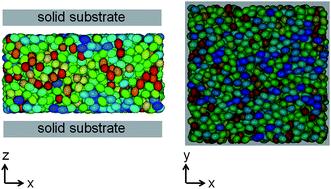Isotropic–nematic phase transitions in confined mesogenic fluids. The role of substrate anchoring
Abstract
The anchoring of rodlike liquid-crystalline molecules at solid surfaces plays an important role in the design of novel nanotechnological devices such as, for example, biosensors. In this work we investigate the impact of various anchoring scenarios on the isotropic–nematic phase transition of weakly anisometric, prolate mesogens confined to a mesoscopic slit-


 Please wait while we load your content...
Please wait while we load your content...